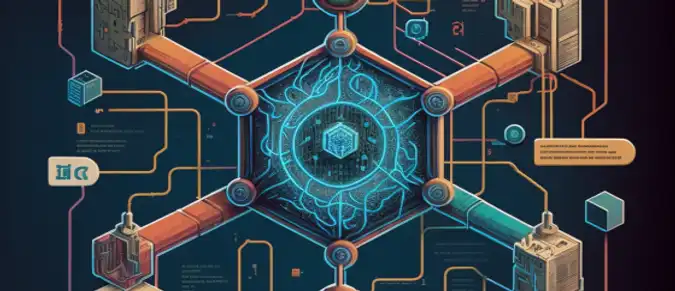A hard fork is a type of software update or change to a blockchain protocol that results in a permanent divergence in the blockchain, creating two separate and incompatible versions of the blockchain. Essentially, it creates a new branch in the blockchain, with the new branch being a completely new and independent blockchain from the original.
Hard forks are usually initiated when there is a disagreement within the community of developers or stakeholders regarding the rules and protocols of the blockchain. The changes made to the blockchain protocol may be significant enough that they are not compatible with the previous version, and all users must upgrade their software to the new version or risk using an outdated blockchain.
A hard fork can result in a new cryptocurrency being created as well, as the new blockchain may have a new name, ticker symbol, and different characteristics from the original. It is important to note that hard forks can be contentious and can result in a split in the community, with some users sticking with the original blockchain and others moving to the new one.
A cryptocurrency hard fork is a fundamental change to the rules of a blockchain protocol that results in a permanent split in the blockchain and the creation of a new, separate cryptocurrency. Here's how a hard fork typically works:
Proposal: A hard fork is typically proposed by a group of developers or community members who want to make significant changes to the blockchain protocol. These changes may be related to security, functionality, or governance, among other things.
Community Support: In order for a hard fork to be successful, it typically needs significant community support. This may involve miners, node operators, and other stakeholders in the blockchain network.
Implementation: Once a hard fork proposal has gained sufficient support, the new blockchain protocol is implemented. This involves creating new rules for validating transactions and blocks, and updating the software that runs the network.
Split: Once the new protocol is implemented, the blockchain splits into two separate chains - the original chain and the new chain. This creates two separate and distinct cryptocurrencies, each with their own blockchain and set of rules.
New Token Distribution: The new cryptocurrency that is created as a result of the hard fork is typically distributed to existing holders of the original cryptocurrency on a 1:1 basis. This means that if you held 10 units of the original cryptocurrency before the fork, you would receive 10 units of the new cryptocurrency as well.
Market Reaction: The market's reaction to a hard fork can be unpredictable, with both the original cryptocurrency and the new cryptocurrency potentially experiencing significant price movements as a result.
It's important to note that not all hard forks are created equal. Some hard forks are contentious and result in a split in the community, while others are more collaborative and result in a smooth transition to a new protocol. It's also worth noting that hard forks can have significant implications for the security and stability of the blockchain network, and should be approached with caution.





